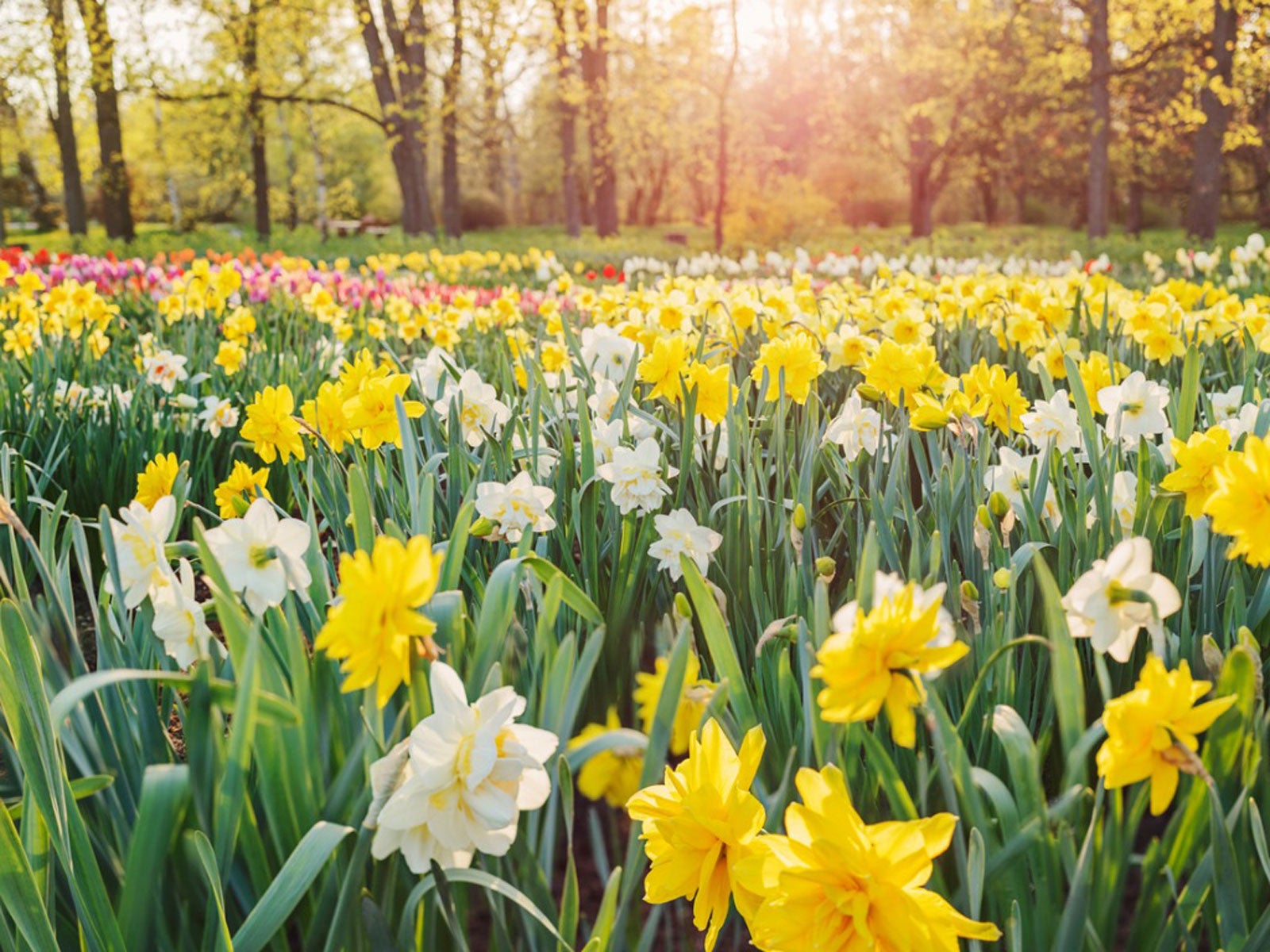Fertilizing Daffodil Plants: How And When To Fertilize Daffodils


We all wait for it -- those first brilliant green shoots peeking out of the still chilly, somewhat soggy soil to announce the beginning of spring. By the time the first sunny golden flowers appear, our hearts and minds are lifted by the spectacular display of daffodils in bloom.
Perennial bulbs, like daffodils, will naturalize and produce flowers for many years. Daffodil fertilizer can enhance the perfect trumpet-shaped forms and colors of these cheery flowers. Find out when to fertilize daffodils and what to feed daffodil bulbs for year after year of uplifting spring color.
When to Fertilize Daffodils
Timing is everything, and feeding bulbs is no exception. The bulbs mostly fend for themselves by storing energy gathered the previous season in the bulb. The foliage should remain after the blooms are gone so they can collect carbohydrates synthesized from solar rays in the photosynthetic process.
Potted bulbs and those in areas with heavy nutrient competition, such as plants growing under trees, will benefit from supplemental feeding. Fertilizing daffodil plants that are established in early spring spurs new spring growth. Newly planted bulbs should be fertilized at planting in fall.
What to Feed Daffodil Bulbs
Feeding bulbs at planting gives them a good start for their spring debut. Use a bulb food or bone meal and work it into the soil a couple of inches (5 cm.) at the bottom of the hole you dug for installation. Mix it in well and then plant the bulb. Mature daffodils respond well to early spring fertilizer.
Use a gentle liquid fish emulsion fertilizer mixed in water for fertilizing daffodil plants and pour it around the bulb zone. You can also scratch a small amount of 5-10-5 granular food into the soil if spring rains will help wash it down into the root area.
How to Fertilize Daffodils
Now that we know the “when” and “what” we can turn our attention to the “how.” How to fertilize daffodils depends on whether they are potted, newly planted or in the ground. Granular formulas should only be used if you intend to water or if there is plenty of rain.
Gardening tips, videos, info and more delivered right to your inbox!
Sign up for the Gardening Know How newsletter today and receive a free copy of our e-book "How to Grow Delicious Tomatoes".
They don't work into the soil without water as a conduit, and too little water may leach a strong mixture of food that can burn the bulbs. Newly planted bulbs should not be laid into a bed of fertilizer for the same reason. Mix it into the soil below the bulb so that once roots grow they can begin to utilize the food.
If you are planning a spring bulb display, prepare the bed by working in daffodil fertilizer at a rate of 2 pounds per 1,000 square feet (0.9 kg. per 93 square m.) of soil.

Bonnie Grant is a professional landscaper with a Certification in Urban Gardening. She has been gardening and writing for 15 years. A former professional chef, she has a passion for edible landscaping.
-
 Looking For Plants To Give You The Soft And Fuzzies? Try These 5 Fuzzy Leaf Plant Options
Looking For Plants To Give You The Soft And Fuzzies? Try These 5 Fuzzy Leaf Plant OptionsLovers of texture, drama, silver foliage and tactile plants will adore these special sensory garden additions. These fuzzy leaf plant options will leave you all aglow
By Susan Albert
-
 Get Ready For A Summer Of Hummers! Grow These Full Sun Hummingbird Plants and Flowers
Get Ready For A Summer Of Hummers! Grow These Full Sun Hummingbird Plants and FlowersIf you’re lucky enough to enjoy a sunny backyard, make sure you are maxing out on your pollinator opportunities and grow these full sun hummingbird plants and flowers
By Tonya Barnett